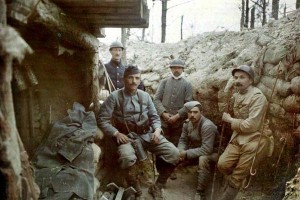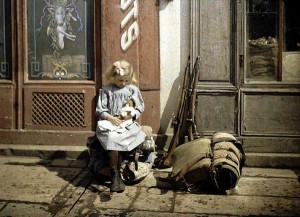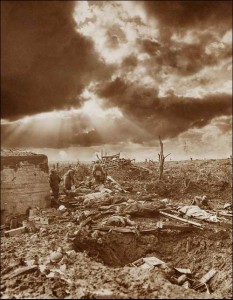Researching my new novel about the Secret Service Bureau in World War 1, I found this great Dutch website with some of the first photographs taken in colour [select Great War in Colour from menu on left]. They were taken using a process called autochrome.
Invented in France in 1904, it involved an elaborate technique: Microscopic grains of potato starch were dyed red, green, and violet, then mixed and coated evenly on to a sheet of glass. A black and white emulsion was then added to this layer. During exposure the grains of potato starch acted as tiny filters on the light sensitive emulsion, producing a positive transparency. At least, I think that is how the website explains it.
The images are really startling, and in some cases moving. It is impossible these days not to think of black and white as ‘a long, long time ago’. There is an immediacy to colour images, as stark and emotional as Pat Barker’s prose, the great Siegfried Sassoon’s memoirs, or reading a poem by Owen, Thomas or Rosenberg.
The website also features photographs by the Australian war photographer, Frank Hurley [select Mad Photographer from menu on left].
Hurley cut his teeth on the Shackleton Expedition to the Antarctic. He took some of the most searing and poignant images of The Great War, including the battlefield at Ypres in 1917. My next novel takes place against the backdrop of the same Ypres offensive, cthat culminated in November 1917 at Passchendaele.



